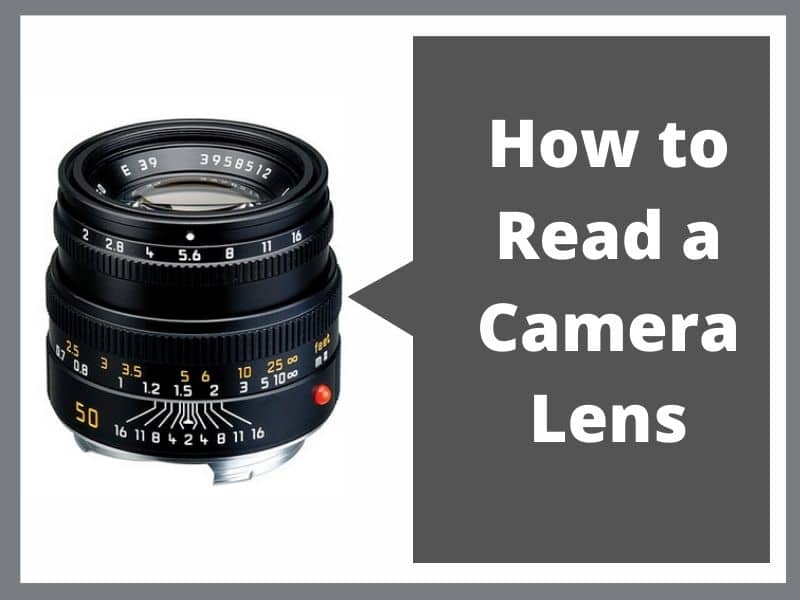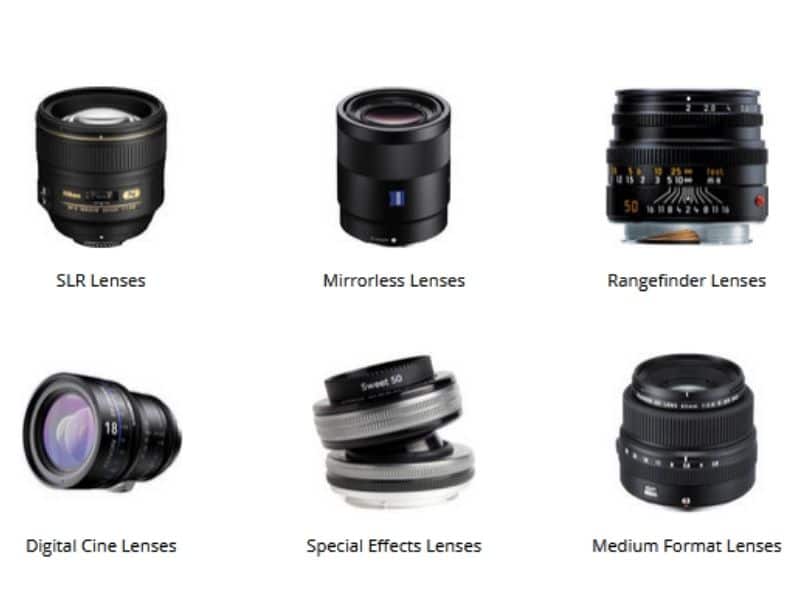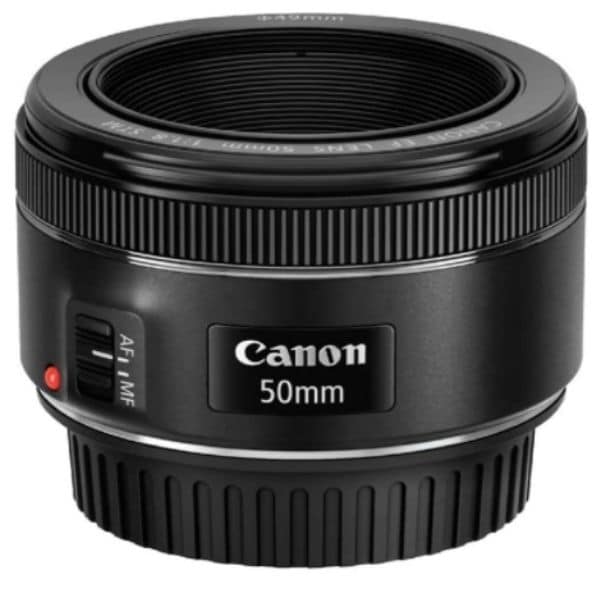As an Amazon Associate I earn from qualifying purchases.
Here How to Read a Camera Lens for Beginners to Advance,Just like DSLR and SLR cameras, these lenses that you use for capturing spectacular imageries, need care too. By that I mean, maintenance. Yes, do not be surprised.
Every type of machinery out there to be ever invented in the world, needs maintenance. And when it comes to expensive and sensitive pieces of machinery like camera and camera lenses, then we may have to take a look at the higher side of maintenance.
On the contrary to that, what could one possibly do with a high-end camera lens maintenance but doesn’t even know how to use it? Well, this is where this article will come in handy for you folks out there who are new to the concept of DSLR camera lens types or just photography itself.
When speaking of knowing how to use a camera lens first you need an introduction to camera lenses and then we can move on to the reading sessions. So what is a camera lens? In very simple words camera lenses are pieces of glasses that are bent for light to move into the camera for focusing on an object while clicking a picture. So what does a camera? It helps in focusing the objects in an image.
Camera lenses are one of the only reasons why photography has earned its fame. The most important feature in a camera is known to be the most important feature in a camera. Some people may even define this to be the eyeglasses of a camera.
Camera lenses have been serving a huge role in the photography business industry for a very long time. And not to mention the fact that today we have a variety of lenses in the market that has different features and functions. So where has technology brought us really?
The sole reason for you to click on this article is to know how to Read a Camera Lens and become a pro. And there’s no doubt in that. So let’s hop right onto the things that you need to. Shall we?
Stay tuned till the end and you shall be able to get a full idea about camera lenses.
Contents
Camera Lens Basics
So first and foremost, when talking about learning How to Read a Camera Lens, you would need to understand a very few terminologies and facts about camera lenses in general.
These are the information that will not only help you read camera lenses better but also take you a step ahead in your photography career. So what are the basics of a camera lens?
Camera Lens Types
First, you would need to learn the types of camera lenses that are out there How to Read a Camera Lens. Primarily there are two types of camera lenses.
- Zoom Lens
- Prime Lens
1. Zoom Lenses
Zoom lens is which contains more than one focal length mentioned in their measurements. For example, 18 – 55mm is considered to be a zoom lens. The numbers that are cited are called the focal length. We will learn how to Read a Camera Lens or about focal lengths and aperture and why it matters a bit later.
But for now, this is a zoom lens. Zoom lenses do not contain a fixed focal length.
2. Prime Lens
Prime Lenses are basically the contradiction of what zoom lenses. These lenses are called prime lenses because these have singular focal length. The focal length in a prime lens is fixed and can’t be altered, unlike zoom lenses.
These lenses are mostly helpful beginner level photographers. Because it helps in focusing on objects very specifically. A very good example would be a lens of 50mm. The number that is cited here is its focal length.
Based on these two types there are a lot of lenses that you can find in the market. Many people may get confused between these.
So in order to break through that confusion, just keep in mind that all lenses that you find in the market can come in two versions. One is the Prime lens and another one is the Zoom lens.
So what are these lenses?
There are basic 4 types of lenses you can find. There’s more but since we are only talking about basics here let’s get to know these 4 first.
- Standard lens: Standard lenses are the most basic types of the lens which captures objects just like what our eyes witnesses. The FOV of these lenses is very close to a healthy naked human eye which is 50mm.
- Wide Angle lens: These lenses are which many beginner-level photographers tend to get their hands on. Their FOV is below 35mm. These lenses help in capturing all objects in an image and provides a wider angle when clicking a picture.
- Telephoto lens: These lenses are which help you capture an image from far off. These are one type of zoom lens and these do not come in the prime version. However, these lenses help you capture images with a great amount of focus from far off. The focal length of these lenses can be between 74mm to 100mm.
- Specialty lenses: Well, these are the fanciest lenses that you can find. When speaking of Specialty Lens there are many types of lenses that fall under this category. Like Fisheye Lens, Infrared lens, Tilt and Shift lens, and many others.
What do I need to know to read the camera lens?
Firstly, when learning about how to Read a Camera Lens or camera lenses are terms. Previously, we got to know about the types so what we are about to now learn are the different types of terms and factors that will help you learn how to read camera lenses.
It is good to let you know that these terminologies are very important and these will help you learn about photography in general. Once you understand the terminologies, you will be able to get everything that you need to know. However, it can get very tricky if you don’t pay close attention. So it is important that you pay attention closely and try to understand them.
Terms
So as we mentioned earlier what we are first focusing on is on terms.
What is the Focal Length?
This may have been the first question that you may have asked yourself. Well, focal lengths are one of the primary characters in a camera lens. The focal length is considered to be the distance between the optical center of the lens to the sensor plane. In other words, Focal length is the distance that is measured between the lens and the subject of the image.
This can come off a bit confusing at first. To fully understand this you would need to know about the point of convergence. The point where the light meets the lens is called the point of convergence. Hence, when you measure the distance between the sensor and the convergence, you get the focal length. Focal length can be cited in numbers such as 24mm, 50mm, 84mm, 100mm, etc.
What is Field of View or FOV?
Field of View or Angle of View is a photographic and complex term to describe “point of view”. The field of view helps in demonstrating a certain point of view that can be seen through a certain angle or position with your lenses. This denotes that every lens contains an angle of view or field of view.
The shorter the focal length of the lens, the wider the FOV of a lens. On the other side of the spectrum, a camera lens with the most focal length will have the shortest field of view. However, shorter FOV will help you capture images in high definition or HD quality.
What is Aperture?
Aperture is probably one of the key features in a camera lens because, without it, the light wouldn’t be able to pass onto the images. To simply denote, the aperture is the hole or the opening in a camera lens through which light passes into the camera and then into the sensor.
A camera lens is built very similarly to a human eye. The aperture in the camera lens is basically the pupil of the eyes, which helps light pass through it. The larger the aperture, the lighter enters the sensors. On the contrary, the shorter the aperture, the less light will enter the camera sensors.
In photography terms, apertures are expressed in f-stops or f numbers. The F-number varies a lot in terms of determining how much light will enter the camera sensors.
Numbers
This is one of the most important parts when you need to need to understand carefully. There are times when you buy a lens and when you go online and check for its information, your brain gets super tangled up into the number of numbers it will feature. Each of the numbers that a lens feature has a different meaning and a function.
Therefore, under this category, we will be talking about numbers and how you can understand the camera lens number for reading it.
If you look closely into a camera lens, you will be able to see different types of numbers labeled on them. As mentioned earlier, each of these letters has a different purpose and meaning behind them. So let us find out how to Read a Camera Lens.
What do these mm numbers mean in a lens?
If you stare at the lens’s bodies closely, you would be able to find out that there’s a bunch of numbers that are labeled on them in mm. For instance, 85mm, 18-55mm, etc.
These numbers are actually the focal lengths of your lens. The mm is an abbreviation and it stands for millimeter. As we’ve learned earlier, the focal length is the distance between your camera’s sensor and the point of convergence in the lens.
The shorter the focal length of the lens, the wider the view but the image quality would decrease. Contrariwise, a longer focal length will always produce a shorter FOV or field of view but will result in High Definition quality images.
So if you see a lens where it is mentioned that it is of, for instance, 85mm, we would consider it a prime lens. This is because the focal range in this lens of 85mm is fixed.
On the other side of the spectrum, a lens that is of 18 – 55mm would be considered a zoom lens. Again why? It’s simple, this is because the focal range in this particular lens is between 18mm to 55mm. Therefore, it doesn’t have a fixed focal range so we would call it a zoom lens.
What does Ø mean in a lens?
This symbol can be often seen in a camera lens. It has a circle with a line crossing through it. This symbol denotes the diameter. For this instance, this denotes the diameter of a camera lens.
In simpler, words this is the width of your lens. This is important in terms of buying a new lens cap or measuring the lens with your camera to ensure you’ve got the right size.
How to identify the aperture in your lens?
When taking a closer analysis of your lens, you would be able to find out that there are other numbers apart from the focal length on the lens which seems somewhat like a 1:3.5 – 5.
These numbers are an indication of the maximum aperture of your lens. As we already know, an aperture is the opening or the hole of a lens that allows light to enter the lens to the sensor. The numbers that are cited here are the measurement of the aperture.
This determines how much light will enter your lens. For example, if you come across a lens that says 1:2.8, you need to know that the number 1: is ratio because the aperture is mostly measured in ratios and the 2.8 is the aperture of your lens. This denotes that your lens will allow an aperture of f/2.8 throughout the zoom range.
What does HSM or USM mean in a camera lens?
The word HSM stands for hypersonic motor and the word USM stands for an ultrasonic motor. Technically, they both are the same thing but named differently for certain brands.
These are known to be the silent wave motors that generate autofocus very quickly. Even though the function of these features may sound the least appealing but it has been a huge advantage for many photographers.
What does 1:2 or 1:1 mean in a camera lens?
In terms of having a lens that contains numbers that isn’t an aperture or focal length and is given in a ratio such as 1:1 would most likely mean you have a macro lens. If you happen to have a lens that is listed as 1:1 that means your photos are going to be of the same size as your camera’s sensor.
With that being said, you may sometimes also witness something like Macro 1:2 labeled on the lens. You may identify this as a macro lens but it isn’t actually. This Macro 1:2 can often mean that your lens is better than those of a standard lens.
This can be often seen on a lens with a longer focal length such as a telephoto lens. Whenever you are taking a picture with this, you need to keep in mind that the objects of the image are going to be half the size of its actual size.
What does II mean in a camera lens?
If you come to cross a lens contains a symbol that looks something like II then this means that. This lens that you are carrying is a newer version of a certain lens. For example, if you happen to have a fisheye lens that says II this would most definitely mean that this is a newer version of the fisheye lens.
This is because many lens manufacturers take popular lenses and design their features into a whole new level hence improvising it. This is part of the money-making industry. So if you happen to get your hands of a lens that says II it would mean that it is an update of that specific lens.
The letters and abbreviations for different companies
A lot of the times you may buy lenses thinking they have a similar feature but it actually isn’t like that. Generally, there are a few things that may be in common but it all comes down to a few differences. Below is a table to show you what each abbreviation stands for in each lens according to their brands.
Also you may be interested in : history of lens design
Conclusion
Learning How to Read a Camera Lens can often come across sweat breaking but if you get the core of it. You will be able to figure everything else out automatically. Camera lenses can be very tricky to read. But you can achieve your best by a lot of patience and focus. If you have a passion for photography and you want to be a rising star as a photographer among your community.
Then it is very crucial that you take your time to practice hard enough to understand every single feature of each of the lenses that you own.
Photography can be a very expensive passion or a hobby to chase but if you got the brains to achieve it then nothing can stop you. In terms of a beginner level, many experts would recommend you to buy high focus lenses and a zoom lens. This is so that you can play around with different types and find what works best for you.
Lenses can be very expensive to buy and if you have dreams of opening a photography business. Then what you can do is ensure that you have enough money to buy at least the basic lenses before stepping in.
However, the requirement doesn’t end there. You need to also ensure that you know how to operate your DSLR and its lenses. This is where this article could come handy for you. When you carefully go through this article and understand how you can read the focal lengths, identify the aperture, etc. Then there is very little that can stop you from becoming a pro-level photographer. Hope this article helps you in your photography career.
Good luck!
As an Amazon Associate I earn from qualifying purchases.




